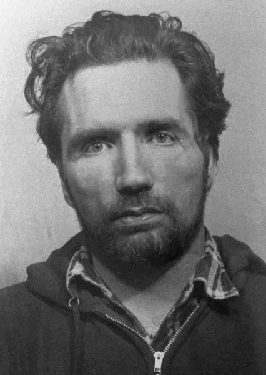Gary M. Heidnik
Gary M. Heidnik was an American criminal who caused notoriety for his crimes in Philadelphia, Pennsylvania. Heidnik's criminal activities, which took place during the mid-1980s, involved the kidnapping, torture, and rape of six women, whom he held captive in the basement of his home. His case drew significant media attention and raised discussions on issues related to mental health, the criminal justice system, and the death penalty in the United States.
Early Life[edit | edit source]
Gary Michael Heidnik was born on November 22, 1943, in Eastlake, Ohio. He had a troubled childhood, marked by the divorce of his parents and reports of physical and emotional abuse. Heidnik scored highly on IQ tests, indicating above-average intelligence, but his academic performance was inconsistent, and he dropped out of high school. Despite this, he later obtained a GED and briefly attended the University of Pennsylvania, though he did not complete a degree.
Criminal Activities[edit | edit source]
In 1986, Heidnik began a horrific spree of crimes that would eventually lead to his capture and conviction. He kidnapped six women and held them captive in a pit dug in the basement of his house on North Marshall Street in Philadelphia. Heidnik's treatment of his captives was brutal and inhumane, involving starvation, torture, and rape. His stated objective was to create a "family" of slaves who would bear his children. The discovery of his crimes in March 1987 shocked the public and law enforcement officials.
Arrest and Trial[edit | edit source]
Heidnik was arrested on March 24, 1987, after one of his victims managed to escape and alert the police. Following his arrest, he was charged with multiple counts of kidnapping, rape, and aggravated assault, among other charges. During his trial, Heidnik's mental health became a central issue. His defense argued that he was mentally ill and unfit to stand trial. However, after extensive evaluation, he was deemed competent. In 1988, Gary Heidnik was convicted and sentenced to death.
Execution[edit | edit source]
Gary M. Heidnik was executed by lethal injection on July 6, 1999, at the State Correctional Institution – Rockview, in Pennsylvania. His execution marked one of the few instances where a person with a significant history of mental health issues was put to death in the United States, sparking further debate over the death penalty and its application to individuals with mental illnesses.
Legacy[edit | edit source]
The crimes of Gary M. Heidnik have had a lasting impact on the American legal and criminal justice systems, prompting discussions about the treatment of mentally ill offenders and the conditions of death row inmates. His case has also been referenced in popular culture and has been the subject of various books, documentaries, and television shows, reflecting the enduring fascination and horror with his crimes.
 This biography of a person notable in the field of crime or criminal justice is a stub. You can help WikiMD by expanding it.
This biography of a person notable in the field of crime or criminal justice is a stub. You can help WikiMD by expanding it.
Search WikiMD
Ad.Tired of being Overweight? Try W8MD's physician weight loss program.
Semaglutide (Ozempic / Wegovy and Tirzepatide (Mounjaro / Zepbound) available.
Advertise on WikiMD
|
WikiMD's Wellness Encyclopedia |
| Let Food Be Thy Medicine Medicine Thy Food - Hippocrates |
Translate this page: - East Asian
中文,
日本,
한국어,
South Asian
हिन्दी,
தமிழ்,
తెలుగు,
Urdu,
ಕನ್ನಡ,
Southeast Asian
Indonesian,
Vietnamese,
Thai,
မြန်မာဘာသာ,
বাংলা
European
español,
Deutsch,
français,
Greek,
português do Brasil,
polski,
română,
русский,
Nederlands,
norsk,
svenska,
suomi,
Italian
Middle Eastern & African
عربى,
Turkish,
Persian,
Hebrew,
Afrikaans,
isiZulu,
Kiswahili,
Other
Bulgarian,
Hungarian,
Czech,
Swedish,
മലയാളം,
मराठी,
ਪੰਜਾਬੀ,
ગુજરાતી,
Portuguese,
Ukrainian
Medical Disclaimer: WikiMD is not a substitute for professional medical advice. The information on WikiMD is provided as an information resource only, may be incorrect, outdated or misleading, and is not to be used or relied on for any diagnostic or treatment purposes. Please consult your health care provider before making any healthcare decisions or for guidance about a specific medical condition. WikiMD expressly disclaims responsibility, and shall have no liability, for any damages, loss, injury, or liability whatsoever suffered as a result of your reliance on the information contained in this site. By visiting this site you agree to the foregoing terms and conditions, which may from time to time be changed or supplemented by WikiMD. If you do not agree to the foregoing terms and conditions, you should not enter or use this site. See full disclaimer.
Credits:Most images are courtesy of Wikimedia commons, and templates Wikipedia, licensed under CC BY SA or similar.
Contributors: Prab R. Tumpati, MD

